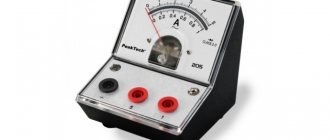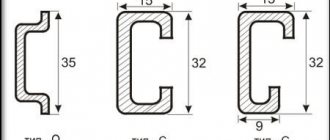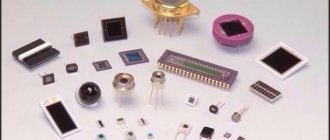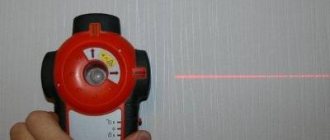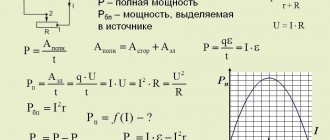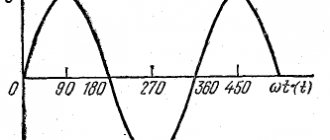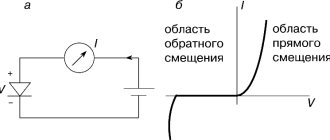The service life of electrical wiring largely depends on the quality of electrical materials used during installation. As a rule, all electrical installation work begins with the purchase of necessary materials and electrical equipment.
Our company uses only high-quality, time-tested products from well-known manufacturers.
List of electrical materials used in electrical installation:
- automatic switches, RCD;
- electrical cabinets, panels, boxes;
- wires and cables;
- sockets and switches;
- cable ducts, trays, corrugation;
- terminal blocks, terminal blocks;
- PVC pipes, HDPE, metal.
Circuit breaker
Automatic switches, RCDs
A circuit breaker is a mechanical device that is used to conduct, turn on and turn off electrical currents. The device is also capable of turning on, conducting currents at a given time and automatically turning them off in a specified abnormal state of the circuit, such as overload, short circuit.
Main technical characteristics:
| Rated voltage | 220/400 Volt |
| Rated switching current | 3,4,5,6,10,16,20,25,32.40,50,63 A |
| Type of protective characteristic | B,C,D |
| Number of poles | 1,2,3,4 |
| Electrical wear resistance | at least 10,000 cycles |
| Degree of protection | IP 20 |
A residual current device (RCD) is a mechanical device that, when the differential current is exceeded, causes the contacts to open.
RCDs are divided into the following types: AC, A, B, S.
AC type
— An RCD that responds to an alternating sinusoidal differential current that occurs suddenly or slowly increases.
Type A
- a protective shutdown device that responds to alternating sinusoidal differential currents, pulsating direct differential currents that arise suddenly or slowly increase.
Type B
— a protective shutdown device that responds to alternating, direct and rectified differential currents.
Type S
— residual current device, selective (with a shutdown time delay.
A differential circuit breaker is a device that combines the functions of an RCD and a circuit breaker.
Construction materials.
In the manufacture of switchgear, switchboards, consoles, panels, housing structures bent from sheet steel (sheet-bent structures) are widely used. Sheets are bent on sheet bending machines or presses, giving them the required profile in the form of corners, troughs, Z-shaped and other shapes. Sheet steel, as well as cold-formed profile steel (angular, trough) are also used for various standard supporting structures - frames, brackets, brackets when they are manufactured in a factory and metal-extraction plant. Structures made from sheet steel and cold-formed profile steel are typically much lighter, less labor-intensive to manufacture, and more responsive to modern aesthetics than welded frame structures made from hot-rolled shaped steel. Hot-rolled shaped steel, angle, channel, and T-shaped steel is currently used mainly for the manufacture of frames and other supporting structures for individual purposes. Strip and round steel are used to make grounding networks and manufacture simple small-sized structures. In switchgear, mesh fences for live parts are made of steel woven single mesh with square cells of 10 and 20 mm in size, and wires 1 - 2 mm thick. Metal and plastic pipes, flexible metal hoses are used mainly for electrical wiring; their range is given in chap. eleven.
Electrical cabinets, boxes, panels
Switchboard
To ensure protection of electrical equipment from environmental influences (dust, water, etc.), special anti-corrosion electrical cabinets, panels, and boxes are used. The size and design of the cabinet is selected to suit the needs of a specific facility. Electrical installation of equipment is carried out using a built-in mounting panel on specialized elements.
Depending on the function performed, electrical panels are divided into distribution, power, lighting, control and automation panels.
Where is it more profitable and convenient to purchase electrical installation products?
We deliberately use the term “purchase” of electrical installation products instead of the more familiar “purchase”. In fact, everything you need can be bought in parts at specialized markets, which for many is not very convenient, takes a lot of time and requires good knowledge of the subject, otherwise choosing compatible products will be problematic. A similar situation can arise in electrical goods stores that are familiar to many, which often need to be visited only in person and this is not the most convenient option in terms of time consumption. It’s convenient to choose in online stores - almost all stores now make beautiful websites, to buy - there is delivery and pickup, various payment methods - only this again applies to those who can choose everything they need themselves, because often sellers in many online stores perform the functions of an operator rather than a consultant.
It’s another matter when the store is represented both online and physically, that is, you can always come and see/touch the product you need (this is important, for example, when buying switches, when a person is guided, among other things, by pleasant tactile sensations). And the most important thing is when you can receive both competent advice, regardless of your level of competence in electrical engineering, and polite treatment, both in live communication and in a telephone conversation.
Therefore, in order to save precious time and money, we would advise you to contact professionals who meet all the parameters listed above. We are confident that if you go to a good store, you will be able to find all the necessary products, materials and tools needed for a successful repair.
Electrical wires and cables
Electrical wires and cables
Most often, the reason for replacing the wiring in a private home is cable wear, so it is better to entrust the choice of electrical wire to specialists. When choosing an electrical cable, you need to take into account the power consumption, operating conditions and what type of equipment will be used.
The main cable and wire products used in electrical installations:
- For entry into the building by air - SIP-1, SIP-2, SIP-3 (Insulated self-supporting wires for overhead power lines TU 16-705.500-2006).
- For underground entry into the building - AVBbShv, VBBShV, ASBL, AAShv (Bronekabel).
- For internal wiring, VVGngLS, VVGng, NYM are used.
Side cutters
The most popular cutting item in household use will be side cutters. Their operating principle is based on the use of a lever, which increases the force applied to the handle, and uses cutting jaws to bite off an object.
Rules for using the tool:
- side cutters must be positioned at a right angle to the required biting area;
- It is not advisable to apply too much force to the handle. The nippers must be taken in the palm of your hand carefully so that unnecessary force is not applied to the jaws;
Nylon clamps
- When working with a side cutter, it is advisable to monitor the process of cutting and moving the tool. If there is a person nearby, it is advisable to point the side cutter away from him so that particles of material do not fall into him;
- if you need to cut through a dense wire, then it is advisable to do this work in a special bosom of the wire cutters, which is located in the cutting part of the side cutter;
- When working, the cutting areas must close completely. If the jaws move to the sides during operation, you need to stop working so as not to break the tool.
Low voltage indication
The expediency of its use is determined mainly by the fact that electric current cannot be seen with the eyes - its presence can only be understood by whether the device connected to the outlet is functioning or not.
Voltage indicator
Passive screwdriver. This is a simple household phase indicator that performs one single option - it indicates the presence or absence of voltage in a certain place in the electrical circuit.
Experienced craftsmen do not use passive screwdrivers because they have too few functions, but they are great for home use.
You may be interested in this Device for finding hidden wiring
Universal active screwdriver
This tool will be an excellent variant of the previous model - it has a switch, you can control the sensitivity of the screwdriver, and also use it in contact and non-contact mode.
Calipers
This tool is necessary for taking measurements with increased accuracy; it can be used both inside and outside objects. Characteristics of the caliper:
Stripping tool
- rod with markings on the scale. The largest measurement will depend on the size of the tool;
- length of fixed jaws for taking external measurements: from 30 to 350 mm;
- jaw size for taking internal measurements: from 6 to 20 mm;
- measuring scale - up to 2 m.
- vernier size from 10 to 40 mm.
- weight may vary depending on the raw materials from which the tool is made.
Tools for stripping wires
A real electrician's kit must have an item for cleaning insulation from wires; it is needed for stripping conductors when connecting sockets, cables, cutting wiring, and so on. You will also need such a tool for household use if you need to carry out home repairs.
You might be interested in: Features of dcv and acv on a multimeter
Wire crimping tool
Note! An electrician's knife is mainly needed for cleaning flat cables. Experienced specialists will easily strip the insulation from other types of wires, but the practicality of use will be less.
A knife is the most common tool for stripping cables, making the work process as easy as possible. This type of device has a large number of models, so everyone can choose something for themselves.
The operating principle is based on processing the wire with two movable blades that have a rounded appearance.
Ties
Nylon ties will be very practical. With their help, you can perform long-term fasteners. Some conditions may create a number of inconveniences. They can be used to secure various cables and wires.
Vernier caliper with LCD display
On one part of the ties there is a closing part, and on the other there are teeth. Thanks to them, these clamps do not open on their own. Main types of nylon ties:
- Frost-resistant nylon ties can withstand sudden changes in temperature. They are made from special nylon that does not melt at high temperatures.
- Ties that can be opened. They are made in such a way that the clamps can be used several times;
- They also produce ties that are equipped with a name plate. A fairly convenient option for construction work to record the necessary markings and so on.
Wire Connection Tools
The method of connecting multiple wires depends on various circumstances.
Wire twisting process
You need to keep in mind the metal of the conductor, the size of the wiring, the number of cores and the type of dielectric material. The main factor is the conditions in which the work process will take place.
Many factories offer a large selection of switches for making connections of various significance. Each type meets specific guidelines and requirements. The block must be selected in accordance with the cable cross-section. Serrated fasteners provide good fixation of the cores. It must be taken into account that aluminum does not tolerate screw connections, so you need to check the contact from time to time and do not wait until it loosens.
Wire end protection
To protect the ends of wires from mechanical stress, experienced craftsmen can apply an alloy of tin and lead (mainly for wires with two or more cores).
Ready-made electrician's kit
In this case, the wire cores will be a common whole. For the tinning process, a soldering iron of different capacities is used.
But too large wires will be quite difficult to process with a soldering iron; you need to use a soldering bath. It belongs to special-purpose items, but it cannot be bought in any store; it is mainly brought to order. It is not recommended to use it at home.
Electrical installation products
After completing the electrical installation work, laying cables or in parallel with them requires installing sockets and switches. It's simple here:
- For electrical installation in a wooden house and external wiring, overhead sockets and switches with a non-flammable base (PUE) are needed.
- For electrical installations in apartments and houses with concrete, cinder block and other types of walls, internal sockets and switches are more often used.
In the domestic market, products from Legrand and Schneider Electric have earned particular trust. Their budget lines are produced in domestic factories, and the range allows you to choose both cheap products and premium products.
Also, for internal sockets and switches, you need to purchase a socket box, and for connecting and branching lines, internal distribution boxes. By the way, distribution boxes are also needed for open electrical wiring.
In conclusion, we recommend watching a video that clearly shows what is needed for electrical installation in an apartment or house:
We have collected general recommendations on what materials to choose for electrical installation work. Share in the comments what products you use when laying electrical wiring and for assembling panels and which manufacturers you trust the most!
